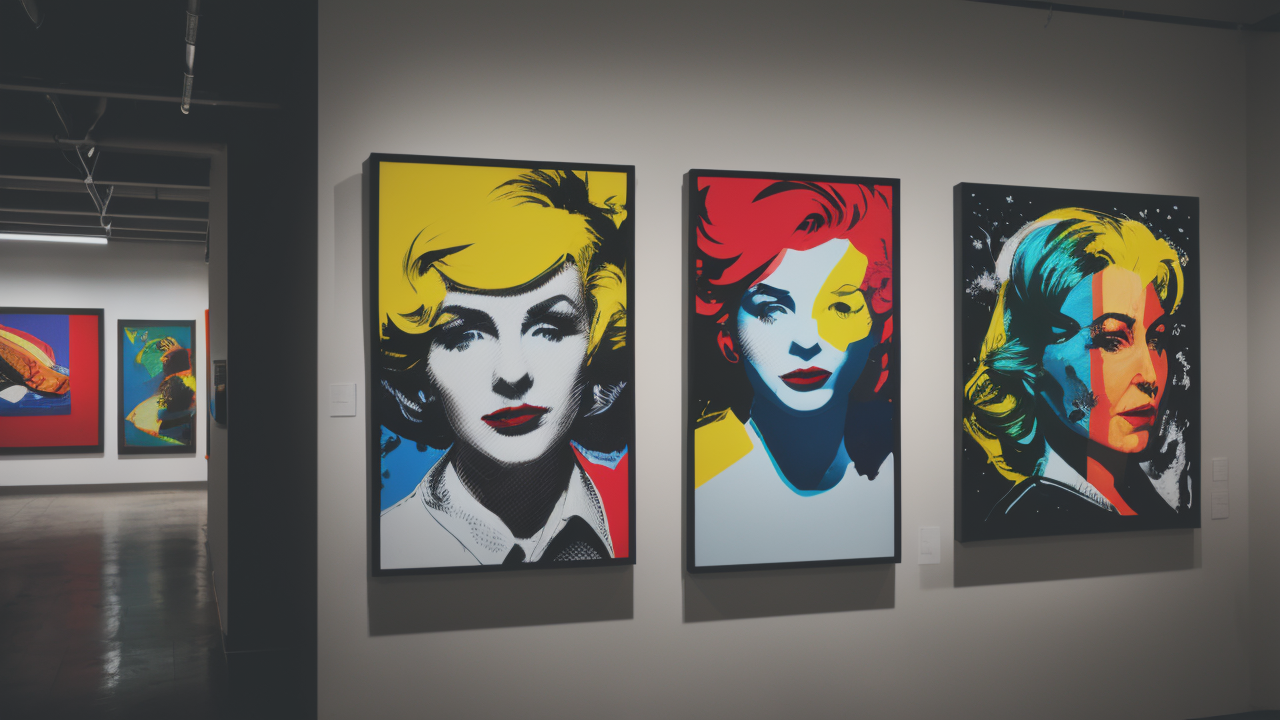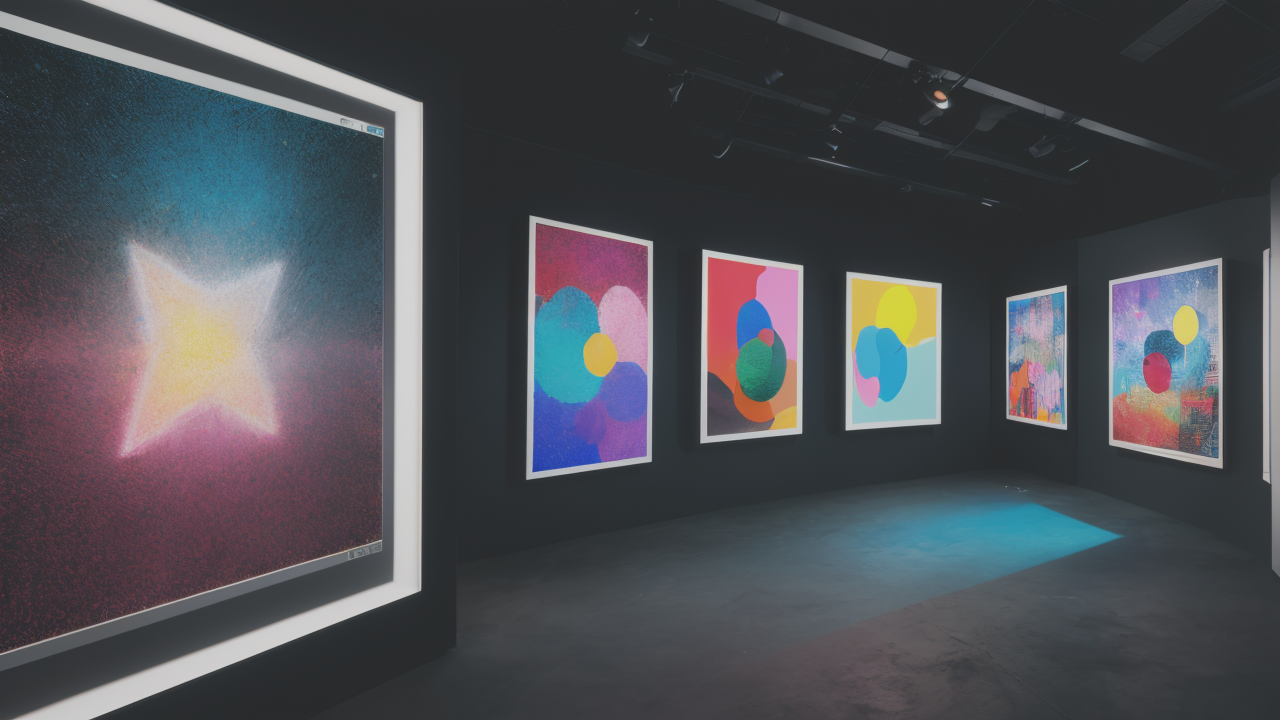
American Aesthetics in Pop Art: How It Shaped a Cultural Movement
The History and Evolution of Pop Art in the United States
Origins of Pop Art
Pop Art burst onto the American art scene in the 1950s. It was a bold response to the post-war consumer boom. Artists found inspiration in everyday items and popular culture. They turned these into striking works of art.

The movement challenged traditional views of what art should be. It made art more accessible to the public. Pop Art reflected the growing consumer culture in America. It celebrated the ordinary and the mass-produced.
Early Pop artists used familiar images in new ways. They took objects out of context. This made people see common items differently. Pop Art quickly gained popularity for its fresh approach. It bridged the gap between high art and everyday life.
Key Figures and Movements
Several artists shaped the Pop Art movement in America. They each brought unique styles to the table. Here are some key figures:
- Andy Warhol: Famous for Campbell's Soup Cans and celebrity portraits
- Roy Lichtenstein: Known for comic book-style paintings
- Claes Oldenburg: Created giant sculptures of everyday objects
- Jasper Johns: Used common symbols like flags in his work
- Robert Rauschenberg: Combined painting and sculpture in "combines"
These artists changed how people viewed art and everyday objects. They influenced not just art, but also design and advertising. Their work spread Pop Art's impact far beyond galleries.
The movement evolved over time. It spawned various sub-movements. Op Art focused on optical illusions. Minimalism stripped art down to basic elements. These offshoots kept Pop Art fresh and relevant.
The Transition to Abstract Pop Art
As Pop Art evolved, some artists began to experiment with more abstract forms. They kept the bold colors of Pop Art. But they moved away from recognizable images. This shift created Abstract Pop Art.
Artists like Tom Wesselmann and James Rosenquist led this change. They used vivid colors and pop culture themes. But their work became less literal and more abstract. This allowed for more personal expression.
Abstract Pop Art combined elements of Pop Art and Abstract Expressionism. It created a new visual language. This style used shapes, colors, and textures to evoke feelings. It kept Pop Art's bold energy while adding more complexity.
This transition opened up new possibilities for artists. They could explore deeper themes and emotions. Abstract Pop Art could be both accessible and thought-provoking.
How Abstract Pop Art Influences Consumer Behavior
Psychological Effects on Viewers
Abstract Pop Art has a unique impact on viewers. Its bold colors and shapes grab attention quickly. This art style can evoke strong emotions and memories. It often triggers nostalgia for familiar objects or icons.

The abstract elements add complexity and intrigue. Viewers may feel a mix of recognition and confusion. This combination can be exciting and engaging. It encourages people to look closer and think deeper.
Abstract Pop Art can make viewers feel connected to shared experiences. At the same time, it challenges them to find personal meaning. This dual effect can create a powerful emotional response. The style's visual impact can be long-lasting.
People often remember Abstract Pop Art images long after seeing them. This makes it effective for both artistic expression and marketing. It can leave a strong impression on the viewer's mind.
The Role of Abstract Pop Art in Branding and Advertising
Many companies use Abstract Pop Art in their branding and ads. This style helps products stand out in a crowded market. It can make a brand seem modern and fun. Abstract Pop Art can convey complex ideas quickly.
Brands use this art style for logos and packaging. It appears in print ads, billboards, and TV commercials. The bold nature of Abstract Pop Art can make ads more engaging. It can help brands connect with younger consumers.
Abstract Pop Art can give traditional products a fresh feel. The style's flexibility allows it to work for various markets. Companies also use it to create a unique brand identity. It can help a brand stand out from competitors.
The cultural associations of Abstract Pop Art can add depth to a brand's image. It links products to ideas of innovation and creativity. This can boost a brand's appeal and recognition.
Case Studies: Successful Campaigns Using Abstract Pop Art
Several brands have successfully used Abstract Pop Art in marketing:
- Coca-Cola's "Pop Art" campaign featured abstract versions of their bottle
- Apple's colorful iPod ads drew inspiration from Pop Art
- Absolut Vodka worked with artists to create Pop Art-inspired bottles
- MTV used Abstract Pop Art in their branding and graphics
These campaigns stood out and connected with consumers. They showed how Abstract Pop Art can boost brand appeal. The Coca-Cola campaign refreshed the brand's image while honoring its history.
Apple's iPod ads became cultural icons. They helped position the product as cool and innovative. Absolut's artist collaborations turned their bottles into collectible art. MTV's use of the style reinforced its image as a pop culture trendsetter.
These examples show Abstract Pop Art's power in marketing. They demonstrate its ability to work across different industries. The style can enhance a brand's message and make it more memorable.
Future Prospects and the Role of Technology
The Intersection of Pop Art and Digital Media
Digital technology is opening new frontiers for Abstract Pop Art. Artists can now create complex designs with powerful software. Digital platforms provide new ways to share and experience art.

Social media sites like Instagram have become virtual galleries. They allow artists to reach global audiences instantly. Animated GIFs and videos bring movement to Pop Art concepts. Virtual and augmented reality offer new ways to interact with art.
Digital tools are changing how Abstract Pop Art is created and viewed. Artists can blend traditional and digital techniques. This is leading to new hybrid forms of art. The digital realm allows for more interactive art experiences.
These changes are expanding what's possible in Abstract Pop Art. They're helping artists create more dynamic and personal works. As technology advances, we can expect even more innovative approaches.
Predicting Trends in Pop Art
The future of Abstract Pop Art looks bright and diverse. We can expect to see more integration with technology. Interactive and responsive artworks may become more common. The line between digital and physical art may blur further.
Themes in Abstract Pop Art may shift to reflect current issues. Environmental concerns and social justice could become prominent. The style may incorporate elements from global pop cultures. This could lead to new, hybrid forms of Abstract Pop Art.
We might see more personalized Abstract Pop Art. AI could help create art tailored to individual tastes. 3D printing could bring Abstract Pop Art sculptures into homes easily. The style may adapt to new mediums we haven't even imagined yet.
As technology evolves, so will the ways we create and experience Abstract Pop Art. This ongoing evolution ensures the style will remain relevant and impactful.
How Artists Are Leveraging Technology for Creative Expression
Artists are embracing new tools to push Abstract Pop Art forward. Some use AI to generate new patterns and forms. Others create digital sculptures that can be 3D printed. Many explore NFTs to sell and authenticate digital artworks.
Here are some ways artists are using technology:
- Generative art programs create unique Abstract Pop Art pieces
- VR tools allow artists to paint and sculpt in virtual 3D spaces
- Motion tracking turns physical movements into digital art
- Projection mapping brings Abstract Pop Art to life on buildings
These technologies are expanding what's possible in Abstract Pop Art. They help artists create more dynamic and interactive experiences. As technology advances, we can expect even more innovative approaches.
The fusion of technology and Abstract Pop Art creates exciting possibilities. It allows for new forms of expression and interaction. This evolution ensures that Abstract Pop Art will continue to shape American culture. It remains a vibrant force in the art world and beyond.


